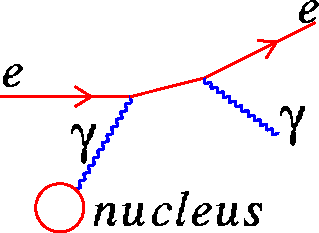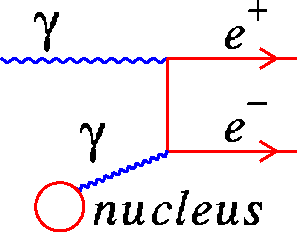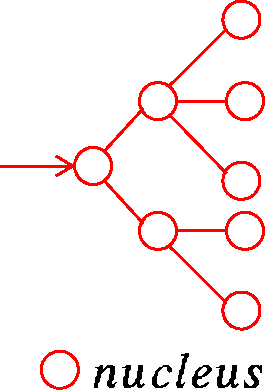| Calorimeters |
|
Calorimeters are devices that measure the total energy of a particle. One distinguish between two types of calorimeters, electromagnetic and hadronic. The former measure the energy of electrons, positrons, and photons, while the latter measure the energy of the strongly interacting particles, e.g. the neutron and proton. A calorimeter is made up of a block of matter, in which the incident particle interacts and produce a cascade ("shower") of increasingly lower-energy particles (eventually most of the incident energy is deposited as heat, though it is not this heat that is measured). A fraction of the deposited energy is detected and gives a signal proportional the the initail energy. This is mostly done by placing, at regular intervals, active medium sensitive (through ionization) to the number of particles passing through it. Electromagnetic calorimeters exist in which the entire block of matter is active.
Ulf Mjörnmark, october 1997 |
|
|
| ©1997 Particle Physics Department, Lund University Comments to: Lund DELPHI group, delphi@quark.lu.se | ||

 For electrons, positrons, and photons, the shower develops through
bremsstrahlung (a photon is radiated when an electron/positron is deflected in the
electric field of a nucleus), and by pair creation (a photon is cpnverted
to an electron and a positron). This process continous until there is not enough energy
left to create a new pair.
For electrons, positrons, and photons, the shower develops through
bremsstrahlung (a photon is radiated when an electron/positron is deflected in the
electric field of a nucleus), and by pair creation (a photon is cpnverted
to an electron and a positron). This process continous until there is not enough energy
left to create a new pair.
 Hadronic showers are more complex, since they produce a wide spectrum
of secondary particles, when the incident particle collides with
a nucleus in the material. The secodary particles continue the process
by colliding with another nucleus.
Hadronic showers are more complex, since they produce a wide spectrum
of secondary particles, when the incident particle collides with
a nucleus in the material. The secodary particles continue the process
by colliding with another nucleus.